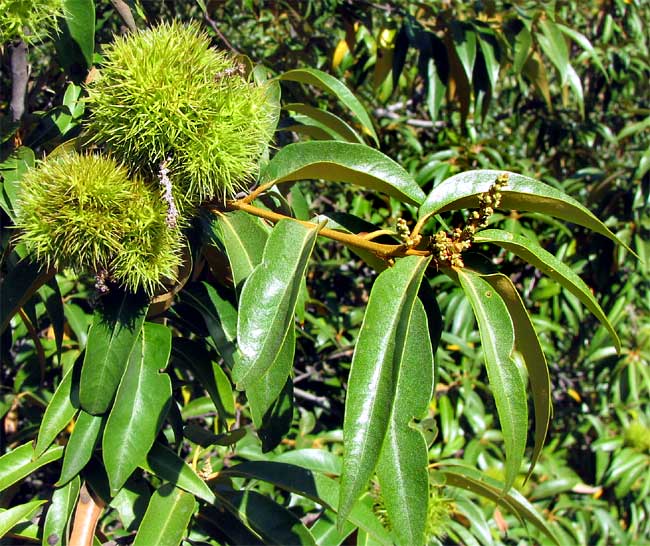Excerpts from Jim Conrad's
Naturalist Newsletter

from the the August 9, 2009 Newsletter, issued from the Siskiyou Mountains west of Grants Pass, Oregon:
GOLDEN CHINKAPINS
Golden Chinkapin, CHRYSOLEPIS CHRYSOPHYLLA, is another of Oregon's three broad-leafed, deciduous trees over 100 feet tall, and these days they also are flowering, though I find them only along ridges above about 4000 feet. You can see their really spiny female fruits above.
In the July 5th Newsletter Oregon's Tanoak trees, Lithocarpus densiflorus, were introduced. They are closely related to Golden Chinkapins and were described as evolutionary links between oaks and chestnuts. The Tanoak's nutty fruits, which look more like oak acorns than chestnuts, are shown http://www.backyardnature.net/n/w/tanoak.htm.
Golden Chinkapins also are evolutionary links between oaks and chestnuts, but you can see that their spiky fruits look more like chestnuts than acorns. At maturity the spiny husks, or "cupules," usually contain three, sweet, edible nuts that can be pretty hard to extricate from their spiny covers.
Older field guides place Golden Chinkapins in the genus Castanopsis, of which about 120 species are found in Asia. Recent genetic sequencing studies indicate, however, that the Golden Chinkapin became genetically isolated from its Asian homeland so long ago that it's evolved away from the original stock enough to be placed in its own genus, Chrysolepis. Only two Chrysolepis species are recognized and both are found in this area.